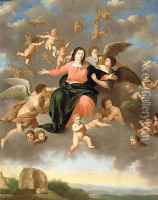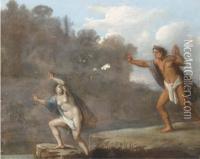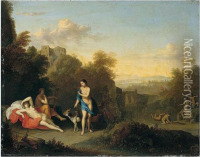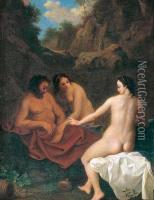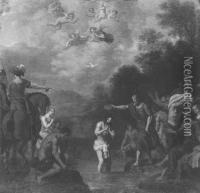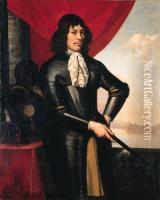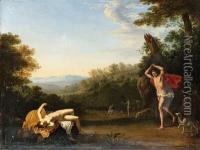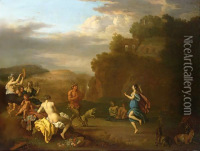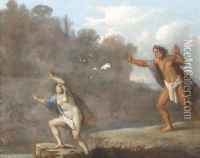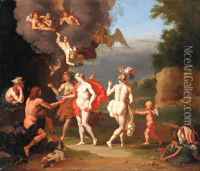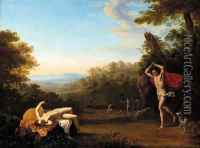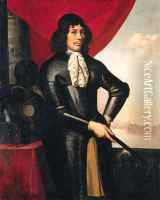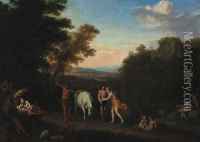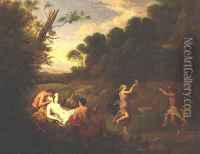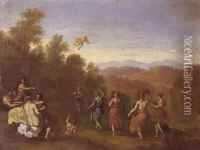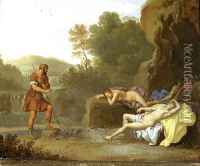Daniel Vertangen Paintings
Daniel Vertangen was a Dutch Golden Age painter, born around the year 1600, although the exact date and place of his birth are not well-documented. He worked mainly in Amsterdam and is known for his landscape paintings and works featuring hunting scenes, which were a popular genre in the 17th century in the Netherlands. Vertangen's paintings often included detailed depictions of trees, animals, and figures set within expansive and atmospheric landscapes.
Vertangen was part of the second generation of Dutch landscape painters, following pioneers like Hendrick Avercamp and Jan van Goyen, who established landscape painting as an important genre within Dutch art. Vertangen's style was influenced by these earlier artists, as well as by his contemporaries, including artists from the Haarlem school such as Jacob van Ruisdael, who was renowned for his dramatic and naturalistic landscapes.
Despite being a skilled painter, Daniel Vertangen's work was somewhat overshadowed by the more famous landscape artists of his time, and as a result, his paintings are less well-known today. However, his contributions to Dutch art are recognized by art historians who specialize in the Dutch Golden Age, and his works are part of several museum collections, including those in the Netherlands.
Details about Vertangen's training and personal life are scarce, and much of what is known about his artistic career comes from his surviving works and the archives of the Guild of Saint Luke in Amsterdam, which was the city's painters' guild. He was active as an artist from around 1620 until his death in 1684. Over time, the demand for landscape paintings like those produced by Vertangen declined, as tastes among art patrons shifted towards other genres and styles. Nonetheless, his paintings remain as a testament to the enduring appeal of the Dutch landscape tradition during the Golden Age of Dutch painting.
